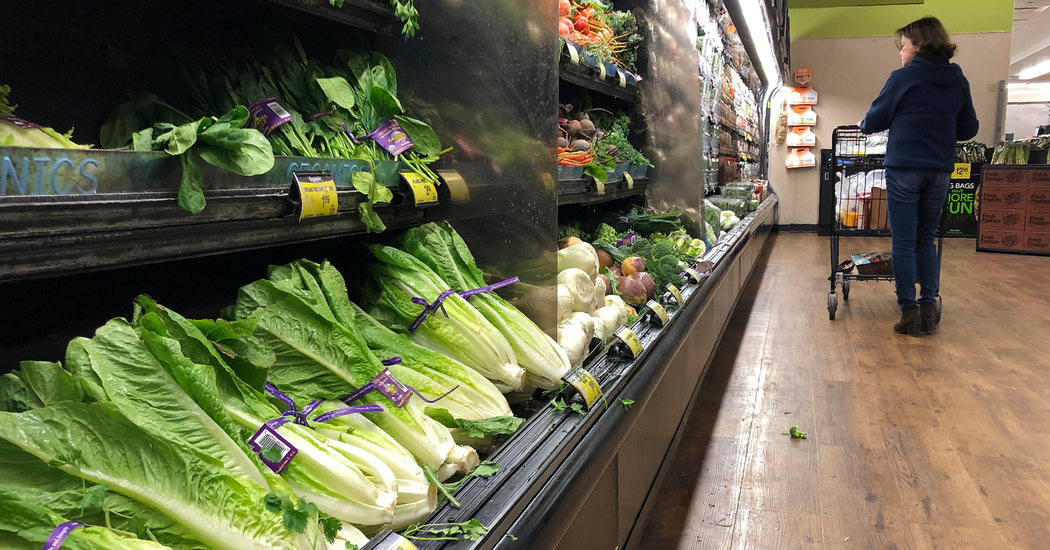
WASHINGTON — It’s O.K. to eat romaine lettuce again, federal health officials said on Monday — as long as you’re sure it wasn’t grown on California’s north and central coast.
The Food and Drug Administration and the Centers for Disease Control and Prevention said investigators had traced the romaine lettuce associated with an outbreak of E. coli that has sickened 65 people in 12 states and Canada to “end of summer” romaine lettuce harvested from that region.
With the growing and harvesting season over there, according to the F.D.A., people may eat romaine lettuce that has been hydroponically or greenhouse grown, or has been harvested from the winter growing desert regions of the United States, and is labeled such.
“If it does not have this information,” the agency said in a statement posted on its website, “you should not eat or use it.”
Dr. Scott Gottlieb, the F.D.A. commissioner, said that, to protect consumers, the industry had agreed to label romaine lettuce with the harvest date and region.
“The F.D.A. also has commitments from the romaine lettuce industry that such labeling will continue into the future and become standard for their products,” Dr. Gottlieb said. The labels may be extended to other leafy greens, he said.
The agency’s announcement follows a stern warning issued two days before Thanksgiving, by the Centers for Disease Control, telling consumers nationwide not only to stop eating romaine lettuce, but also to scrub and sanitize drawers or shelves where it has been stored. Stores were told to pull all romaine from their shelves, and restaurants were ordered to stop serving it.
The E. coli outbreak was first identified on Oct. 8, and the onset of the last reported illness was Oct. 31, according to the F.D.A. The agency said that 43 people had become sick in 12 states, and an additional 22 people in Canada also became ill.
Federal investigators believe that the E. coli strain, known as O157:H7, causing the outbreak resembles the one that caused an outbreak in the fall of 2017 in the United States and Canada.
The C.D.C. has said that these cases are genetically unrelated to another E. coli outbreak earlier this year that killed five people and sickened 200. That bacteria came from a tainted drainage canal near an Arizona lettuce farm, investigators said.
The F.D.A. said there was no reason to believe that the romaine lettuce being grown in other large growing regions, including the California desert region of the Imperial Valley; the desert region of Arizona in and around Yuma; and Florida, would be contaminated. Romaine lettuce imported from Mexico should also be safe, the agency said. It suggested that last week’s warning had ridded the country of any tainted lettuce.
“The F.D.A. believes it was critically important to have a clean break in the romaine supply available to consumers in the U.S. in order to purge the market of potentially contaminated romaine lettuce related to the current outbreak,” Dr. Gottlieb said. “This appears to have been accomplished through the market withdrawal request of Nov. 20.”
The F.D.A. has urged growers, processors and sellers to label all individually packaged romaine products to identify the region and harvest date. If heads of romaine are being sold unwrapped, retailers are expected to prominently label the produce display, Dr. Gottlieb said.
The commissioner also said that the industry would establish a task force to adopt standards for traceability of its products, as well as to determine how to stop future outbreaks.

